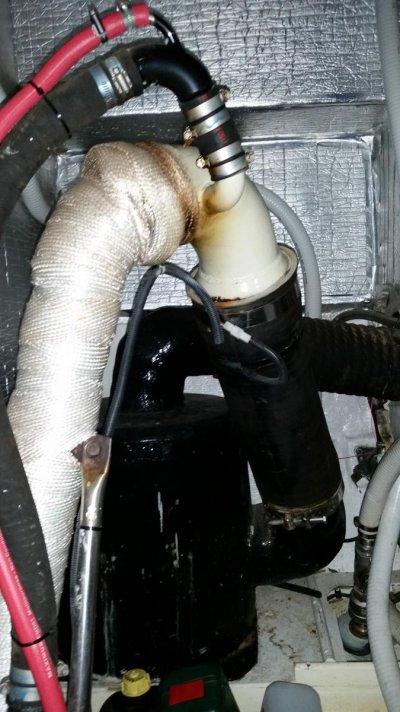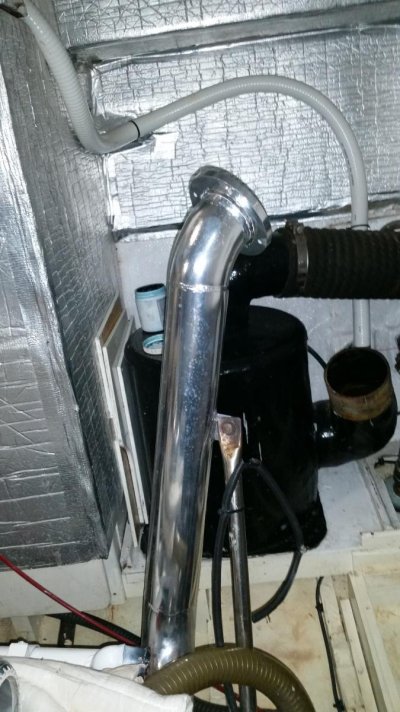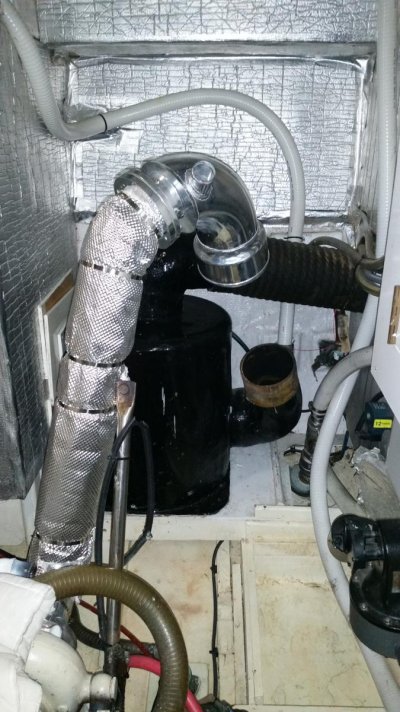Lageed with the lava which cut down the heat well, But gained lots more insulation with the sheet stuff which really killed the heat and taped the joints with aluminum tape. It mad a nice finish. When I got the boat in 2012 the P.O. had stripped a lot of the boat , before he died very little was operational. After his death the family came and tookeverything of value. The boat was really bare bones. I looked on it as a clean slate, and after using it for a few months realized the engine room (full size 61/2ft headroom 10ft fore and aft and full 15 1/2ft beam was running to hot in the Caribbean. Hitting temps of 140F. So set about changing that, the insulation on the risers was old style and been removed numerous times, and using a heat sensing gun showed huge heat leakage. Whereas the engine block etc was running at op temps 180F, the risers were 3 times that, so before I dealt with airflow I changed the riser insulation to be more efficient, that coupled with a proper vent system, E.R. room air changed every 90 secs, plus forced ambient air blown at the engine intake fiters solved the E.R. Temps into the 110F approx, Engines run better and quieter, and produce better combustion and power at lower rpm.
Cool engine rooms are efficient engine rooms. !!



